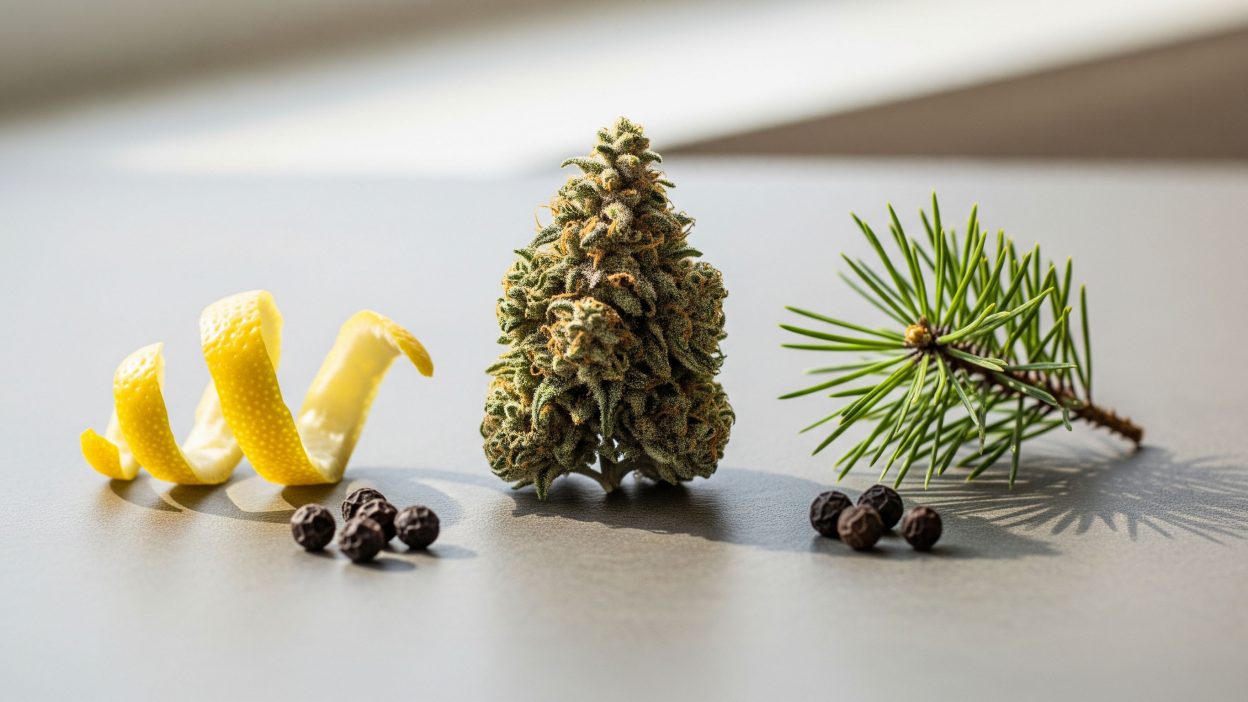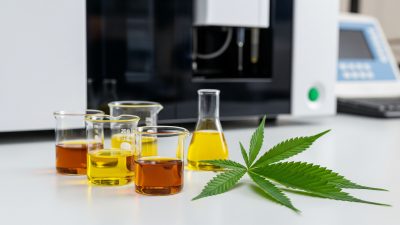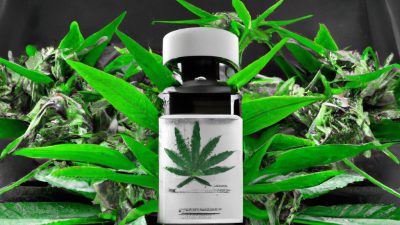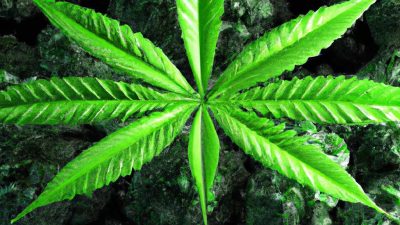The distinctive aromas that define different cannabis strains—from the citrusy burst of Lemon Haze to the earthy undertones of OG Kush—originate from complex molecular compounds called terpenes. Far from being mere aromatic accessories, these volatile organic compounds play crucial roles in determining the therapeutic effects, bioavailability, and overall experience of cannabis extracts. Understanding terpenes and their interactions represents one of the most significant frontiers in cannabis science, offering extraction professionals and consumers alike the keys to unlocking more targeted, effective therapeutic applications.
The Science Behind Terpenes
Molecular Structure and Function
Terpenes are hydrocarbon compounds produced in the resin glands of cannabis plants, specifically within the same trichomes that house cannabinoids like THC and CBD. These molecules serve multiple functions in the plant kingdom, including attracting beneficial insects, repelling predators, and protecting against environmental stressors. Over 200 different terpenes have been identified in cannabis, with concentrations typically ranging from 0.1% to 4% of the plant’s total weight.
The molecular diversity of terpenes creates their varied aromatic profiles and therapeutic properties. Monoterpenes like limonene and pinene consist of two isoprene units, while sesquiterpenes such as caryophyllene contain three isoprene units, resulting in more complex molecular structures and often more potent biological activities.
Biosynthesis and Plant Production
Terpene production in cannabis plants occurs through the mevalonic acid pathway, where enzymes called terpene synthases convert precursor molecules into specific terpene compounds. Environmental factors including light exposure, temperature fluctuations, soil nutrients, and stress conditions significantly influence terpene biosynthesis, explaining why identical strains grown under different conditions can produce dramatically different aromatic profiles.
This biosynthetic complexity has important implications for extraction operations, as terpene profiles can vary not only between strains but also between harvests, growing locations, and even individual plants within the same cultivation facility.
Major Cannabis Terpenes and Their Effects
Myrcene: The Sedating Foundation
Myrcene represents the most abundant terpene in many cannabis varieties, particularly those classified as indica strains. This monoterpene, also found in mangoes, hops, and lemongrass, produces earthy, musky aromas with hints of clove and herbal notes. Research indicates that myrcene enhances the sedating effects of THC while potentially increasing cell membrane permeability, allowing for improved cannabinoid absorption.
Clinical observations suggest that cannabis varieties containing myrcene concentrations above 0.5% tend to produce more relaxing, body-focused effects, supporting the traditional association between myrcene-rich strains and nighttime use. The compound’s muscle relaxant properties make it particularly valuable in extracts designed for pain management and sleep disorders.
Limonene: Citrus-Powered Mood Enhancement
Limonene, the second most abundant terpene in cannabis, creates the characteristic citrus aroma found in strains like Super Lemon Haze and Durban Poison. Beyond its pleasant fragrance, limonene demonstrates significant therapeutic potential, particularly for mood disorders and gastrointestinal issues.
Research indicates that limonene can cross the blood-brain barrier, where it influences neurotransmitter activity and potentially reduces anxiety and depression symptoms. The compound also exhibits gastroprotective properties and may enhance the absorption of other terpenes and cannabinoids through the digestive system, making it valuable in orally administered cannabis products.
Pinene: Forest Fresh Focus
Alpha-pinene and beta-pinene provide the fresh, pine-like aromas reminiscent of coniferous forests. These terpenes appear in strains such as Jack Herer and Dutch Treat, contributing to their reputation for promoting alertness and mental clarity. Pinene’s therapeutic properties include bronchodilation, making it potentially beneficial for respiratory conditions, and acetylcholinesterase inhibition, which may help counteract THC-induced memory impairment.
The alertness-promoting properties of pinene make it particularly valuable in daytime cannabis products designed to maintain productivity while providing therapeutic benefits.
Caryophyllene: The Cannabinoid-Like Terpene
Beta-caryophyllene stands apart from other terpenes due to its unique ability to directly activate CB2 cannabinoid receptors, making it function as both a terpene and a dietary cannabinoid. This spicy, peppery compound appears in strains like GSC (Girl Scout Cookies) and contributes to their anti-inflammatory and analgesic properties.
The CB2 receptor activation by caryophyllene provides therapeutic benefits without psychoactive effects, making it valuable for medical applications where patients require anti-inflammatory relief without cognitive impairment.
The Entourage Effect and Terpene Synergy
Mechanisms of Interaction
The entourage effect describes the enhanced therapeutic outcomes that result from the combined action of cannabinoids, terpenes, and other cannabis compounds working together. Terpenes contribute to this phenomenon through multiple mechanisms, including modulation of cannabinoid receptor activity, alteration of neurotransmitter function, and changes in blood-brain barrier permeability.
Research demonstrates that terpenes can influence how cannabinoids bind to receptors, potentially enhancing or moderating their effects. For example, myrcene appears to increase THC’s sedating properties, while pinene may reduce THC-induced anxiety and memory impairment.
Clinical Implications
Understanding terpene interactions enables the development of more targeted therapeutic products. Rather than relying solely on THC and CBD ratios, formulators can design extracts with specific terpene profiles to achieve desired therapeutic outcomes. This approach, known as “terpenoid profiling,” represents a significant advancement in personalized cannabis medicine.
Extraction Considerations for Terpene Preservation
Temperature Sensitivity and Volatility
Terpenes are highly volatile compounds that readily evaporate at relatively low temperatures. Most cannabis terpenes have boiling points between 150-220°C (302-428°F), making them susceptible to loss during high-temperature extraction processes. This volatility necessitates careful temperature control throughout extraction and processing to preserve therapeutic terpene content.
Traditional extraction methods often result in significant terpene loss, with some processes destroying up to 90% of the original terpene content. Advanced extraction technologies that operate at lower temperatures, such as R134a systems, demonstrate superior terpene preservation, maintaining more complete therapeutic profiles in final products.
Solvent Selectivity and Recovery
Different extraction solvents demonstrate varying affinities for different terpene classes. Hydrocarbon solvents like butane and propane effectively extract most terpenes but may co-extract unwanted compounds. CO₂ extraction can be tuned for terpene selectivity but often requires separate extraction passes for optimal recovery.
R134a extraction shows particular promise for terpene preservation due to its selective extraction properties and low processing temperatures. The solvent’s ability to extract terpenes while excluding many unwanted compounds results in cleaner extracts with more intact therapeutic profiles.
Quality Control and Standardization
Analytical Testing Methods
Gas chromatography with mass spectrometry (GC-MS) represents the gold standard for terpene analysis in cannabis extracts. This analytical method can identify and quantify individual terpenes with high precision, enabling quality control and product standardization. Advanced facilities implement comprehensive terpene testing protocols that analyze 20-40 different terpenes per sample.
Headspace analysis and solid-phase microextraction (SPME) techniques provide additional tools for terpene characterization, particularly for volatile compounds that may be lost during traditional sample preparation methods.
Standardization Challenges
Terpene content standardization presents unique challenges due to the compounds’ volatility and environmental sensitivity. Proper storage conditions, including temperature control and protection from light and oxygen, are essential for maintaining terpene integrity throughout the supply chain.
Therapeutic Applications and Product Development
Targeted Formulations
Understanding terpene effects enables the development of targeted therapeutic formulations. Sleep-focused products might emphasize myrcene and linalool content, while daytime formulations could feature limonene and pinene profiles. This targeted approach represents a significant advancement over traditional strain-based product development.
Delivery Method Considerations
Different consumption methods affect terpene bioavailability and therapeutic outcomes. Inhalation provides rapid terpene absorption but may not deliver sustained effects, while oral consumption offers longer duration but may alter terpene metabolism. Topical applications allow for localized terpene delivery without systemic effects.
The Future of Terpene Research
Emerging research continues to reveal new therapeutic applications for cannabis terpenes. Studies investigating terpene combinations, synthetic terpene supplementation, and novel delivery methods promise to expand therapeutic possibilities. As our understanding of terpene pharmacology deepens, the development of precisely targeted cannabis therapeutics becomes increasingly possible.
The integration of terpene science with advanced extraction technologies represents a convergence that will define the future of cannabis medicine, offering unprecedented opportunities for therapeutic innovation and personalized treatment approaches.





